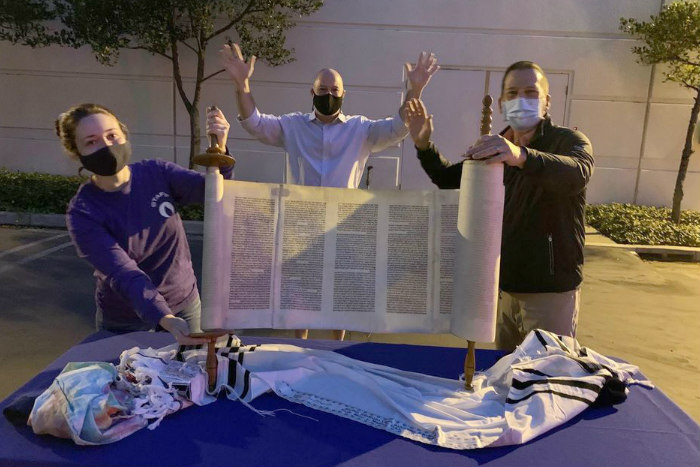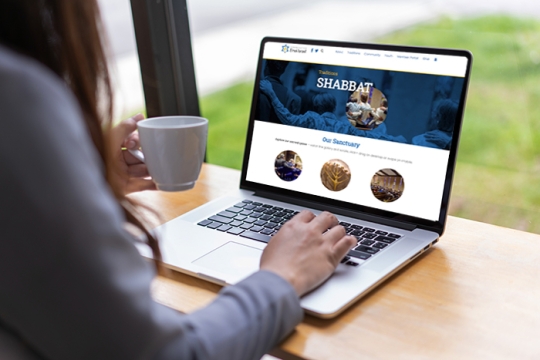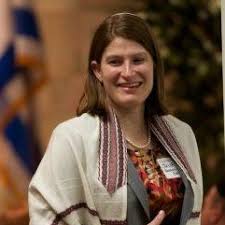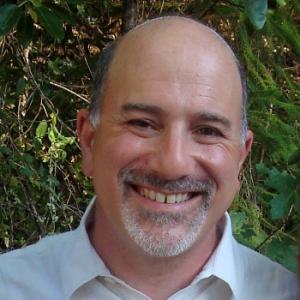
Craving personal connection to actual people? Missing in-person contact with your clergy and community? Consider “Drive Thru Judaism” as an antidote to quarantined community.
When the quarantine compelled synagogues to cancel in-person gatherings, Congregation Or Ami in Calabasas, CA, pivoted. No stranger to disrupting our own synagogue norms to ensure we are more Kehillat Netflix than Beit Blockbuster, our leadership piloted Drive Thru Judaism, a series of poignant experiences that, while keeping people safely in their cars, uplifted our quarantined congregation, banishing loneliness and bringing Jewish spiritual sustenance to a community in quarantine.
Four Distinct Drive-Thru Experiences
Drive Thru Judaism brought the community to the synagogue for personal connection, ritual observance, social action, and individual blessings with clergy: Jewish meaning, while no one got out of their cars.
Some events were multi-day deals: Our pre-High Holiday event unfolded over four days, and SOVA Sundays began as a two-day food collection; our and event were single-day pop-up experiences. At each, volunteers’ temperatures were checked, participation was documented in case of future contact tracing needs, and physical distancing was monitored and maintained.
The unexpected payoff? More than 86 percent of our member households participated in at least one Drive Thru Judaism event. Half participated in two or more.
Event #1: High Holiday Essentials Bag Pick Up and Drive Thru Blessings
Missing each other while missing the , more than 86 percent of our congregants participated, picking up machzorim and High Holiday Essentials Bags while enjoying individualized blessing with a rabbi.
Volunteers smiled and schmoozed into car windows (socially distanced and masked, of course), ensuring everyone knew how to sign onto services, make their Mikdash M’at (sacred space at home), and prepare for holiness by using the reflection pages in the included Prayer Supplement. A congregant-artist’s shiviti for their wall and a blow-up DIY Tashlich beachball were among the giveaway items.
Family Service Activity Bags and religious school materials boxes were also available. We set aside a special day for non-congregants to drive through for personalized welcome and attention, and we also snail-mailed the Essential Bags to distant congregants.
Event #2: SOVA Sundays Food Collections
When COVID-19 killed our annual food collection for the local SOVA Food Pantry, two teens stepped up and organized a drive thru food collection drive. Congregants simply placed their food bags in the trunk and popped it open when parked, and our people retrieved the donations.
The collection surpassed previous years’ by more than 1,000 pounds, testifying to the penetration of Torah’s teachings of caring for the vulnerable. Energized congregants agitated to continue this , and our monthly SOVA Sundays were born.
Event #3: Drive Thru-lav Sukkot Celebration
Warmly welcomed at the entrance, carloads came thru the parking lot and stopped to learn about and say blessings for the and . Participants dropped off donations of blankets and warm jackets for a local organization that ministers to the unhoused.
A congregant-engineer designed and built our “Shake Shack,” a sukkah big enough for a truck to drive thru. Volunteers decorated it with traditional schach (palm branches), pictures on the walls, and blessing bears on which waiting carloads wrote thanks for their bounty. A rabbi greeted each carload, explaining the Shake Shack’s significance, and reminded everyone that we can address the shakiness in our world by caring for others, voting our values, and reminding everyone we know to vote.
Participants left with a Sukkot Shake Shack keychain and a personal invitation to the Living Torah Car Rally for Simchat Torah.
Event #4: Living Torah Car Rally for Simchat Torah
Using an online Google map, cars full of congregants visited eight homes to witness Torah scenes played out on front lawns. In one place, Moses thanked God for giving the Ten Commandments, hearing a blast from a rooftop angel in response, while on the other side of the lawn an Israelite bowed down to a golden calf (a spray-painted rocking horse). At another location, (a stuffed animal renamed) Jacob lay in a sleeping bag with a rock as his pillow, while beside him on a ladder, angelic white sheets seemed to climb up and down. At each location, young participants received a themed prize (LEGO pencils at the Mishkan-Making House; hot rock candies at the Burning Bush).
Back at the synagogue, cars were received by Moses at the edge of the Promised Land (a projected map of Israel, complete with hanging honey jars and empty milk bottles). Moses sent them forth to see Torah scrolls unrolled and read at Deuteronomy’s end and Genesis’ beginning, whereupon God welcomed them into a chaotic Tohu Vavohu light show, before intoning two words “Yehi Or” (Let there be light) to send them on a journey thru the six days of creation.
At the seventh day station, participants received a warm Shabbat blessing from the rabbi and a wrapped mini-challah. Two hundred and forty-five people participated, nearly doubling our usual Simchat Torah participation.
6 Elements of Engagement
Each Drive Thru Judaism experience harnessed intense congregational creativity combined with significant silo-busting idea-sharing thru professional networks over Facebook. The experiences incorporated most of these engagement elements:
- Warm welcome: We provided masked but meaningful welcomes as participants entered the synagogue parking lot.
- Clear signage: We directed traffic in an organized way, taking the anxiety out of actually showing up
- Ritual enactment: This included Sukkot’s lulav- and etrog-shaking, Simchat Torah’s Witnessed Unrolling of our Sacred Scrolls, and more.
- Social action: The study of Torah and reengagement with ritual necessarily must bind us to repairing the world
- Personalized blessing by clergy: See-through masks allowed the smiles to shine amidst the sharing of sacred sentiments of hope and prayer.
- Great giveaways: Everyone left with a remember a meaningful memento of our holy time together.
5 Keys to Keep Them Coming
These Drive Thru Judaism events enjoyed higher levels of participation because we planned for:
- Personal calls to participate: Volunteer and staff teams organized to personally invite people to participate.
- Active campaigning: Our team blanketed our communications channels both with clear explanations of what would happen and why people would want to participate.
- Private moments with clergy: The promise of a few precious moments with the clergy enticed many to attend and return.
- Shared videos: After each experience, we promoted videos and pictures to drive excitement for subsequent events.
- Synergistic marketing: Before participants left an event, they received an invitation, both verbal and written, to the next event.
Unexpected Benefits of Drive Thru Judaism
Collectively, these events instilled a sense of connection and community that elevated the experience during online Holiday services. They also breathed new life into tired rituals.
In many cases, these experiences led to unexpected membership renewals (what we call “partnership”) by those who hadn’t yet renewed because, as one returning congregant said, “This event reminded me how much I needed this community.”
We also experience vastly increased High Holiday appeal donations because, as one donor remarked, “We saw how creatively you worked to connect us all while keeping us safe, and we felt that connection.”
What’s the Future of Drive Thru Judaism?
Our Drive Thru Judaism experiences led our leaders, volunteers, and participants to feel pleased, proud, and proficient at building community and celebrating Judaism, while still staying true to our synagogue’s vision: to be a sanctuary of kindness, a safe Jewish community for today, your second home.
Plans are underway for a Drive Thru and Candle-Lighting as well as a progressive prayer service led by our youth songleaders, singing people through the Shabbat Service spread out along a parking lot drive thru route.
However long COVID-19 continues, Congregation Or Ami is committed to creatively creating community, celebrating Judaism, and driving our community to and through meaningful Jewish moments.
This piece is adapted with permission from the original on Rabbi Paul Kipnes’s blog, where you can learn more about this congregational initiative.
Have something to say about this post? Join the conversation in The Tent, the communications and collaboration platform for congregational leaders of the Reform Movement. You can also tweet us or tell us how you feel on Facebook.
Related Posts

Setting Your Leaders Up For Success

Safety, Equity, and Accountability is the Path to a Thriving Jewish Community


